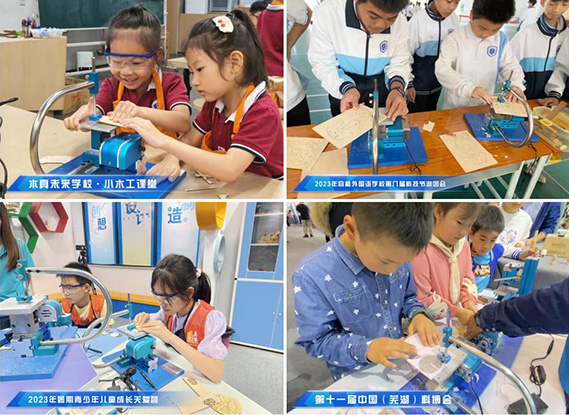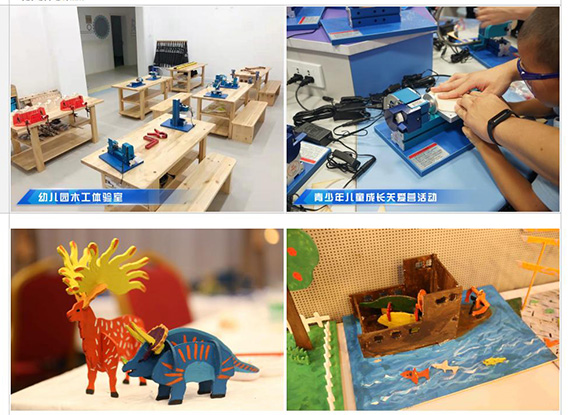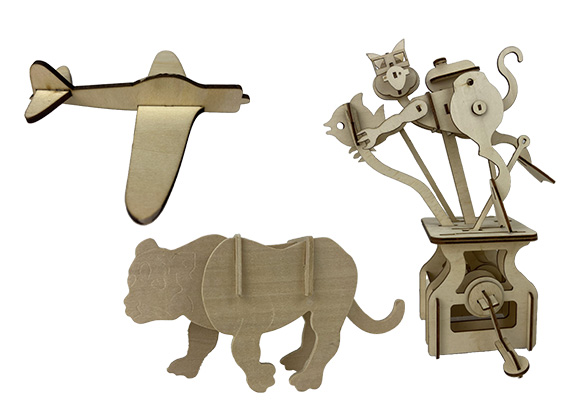
Add Date: 2025/4/3 Views: 1
Keywords: # Creative Woodworking Course, # Primary and Secondary School Labor Skills Course, # Woodworking Education Equipment, # Woodworking Student Machine Tool, # Woodworking Creative Course
Want to create a woodworking workshop filled with creativity and fun? Here are some practical environmental design suggestions to make your workshop both safe and educational!
From the establishment to the opening of the workshop, the implementation steps include group safety education, tool usage introduction, discussion of area rules, and demonstration operations.

1. Space Planning
Area: Determine based on scale (recommended at least 80–150 sqm). Must include processing areas, storage areas, teaching/design areas, etc.
Ventilation and Lighting: Prioritize spaces with good natural ventilation and ample lighting to avoid dust accumulation.
Functional Area Division
Processing Area: Place large equipment and reserve safe operating space.
Hand Operation Area: Equip with workbenches and handheld tools (chisels, files, sanders, etc.).
Assembly and Sanding Area: Separate space to minimize dust contamination in other areas.
Storage Area: Store wood, hardware, paint, etc.; must be dry and fireproof.
Design/Teaching Area: Equip with desks, chairs, computers, projectors (for teaching or design discussions).
Rest Area: Provide tea/water, first-aid kits, and storage cabinets for safety equipment.

2. Equipment and Tool List
Basic Equipment: Table saw (push saw/circular saw), planer, jointer (for wood flatness), drill press, handheld drill, sander (belt/disk), lathe (optional, for woodturning), dust extraction system, etc.
Hand Tools:
Measuring Tools: Tape measure, square, calipers.
Cutting Tools: Hand saw, jigsaw.
Shaping Tools: Chisels, wood files, hand planes.
Clamping Tools: F-clamps, G-clamps, bench vise, etc.
Auxiliary Equipment: CNC machine (optional, for high-end customization), laser engraver (optional, for personalized designs), etc.
3. Material and Consumable Management
Wood Procurement:
Common Woods: Pine, oak, walnut, cedar, etc., stored by specification.
Special Woods: Small quantities of hardwood (e.g., rosewood, sandalwood) based on project needs.
Material for Children: Provide suitable materials for independent operation to help build cognitive structures. Establish a workflow for the woodworking area, such as design drawing, material selection, tool usage, operation, decoration, and display of finished products.

Consumable List:
Glue, sandpaper, hardware, etc.
Paint and coatings (water-based paints are more environmentally friendly), wood wax oil, fire retardants.
Storage Requirements:
Store wood off the ground to avoid moisture and deformation; store chemicals in ventilated cabinets away from open flames.
In the environmental design of the woodworking area, consider the rational layout of space to ensure safety while fostering students' creativity and curiosity. Emphasize organized tool and material placement, as well as clear signage for safety rules.
Safety and Environmental Measures
Mandatory Protective Gear: Dust masks, safety goggles, noise-canceling earplugs, gloves.
Firefighting Equipment: Fire extinguishers (dry powder/carbon dioxide), smoke detectors, emergency exit signs.
These suggestions and examples can help you design a woodworking classroom environment that ensures safety while promoting students' creativity and hands-on skills. Provide a variety of materials and tools, such as wood chips, sticks, and small saws, for students to freely choose and operate. For outdoor workshops, focus on displaying large wooden works. Incorporate wood products into other activity rooms, such as wooden books in reading rooms, to make woodworking creativity visible everywhere.